On Sunday evening, when Hollis Thomas was doing his regular on-this-date-in-history bit on WIP, he mentioned that the Brooklyn Dodgers hosted the first major league baseball game ever played in Jersey City on April 19, 1956 – exactly 59 years earlier – in essence making them the Jersey City Dodgers.
Rob Charry – his perpetually-angry co-host – was as befuddled as Charlie Manuel trying to figure out the double-switch. Rob had no clue about the Dodgers ever playing a game in Jersey City.
But – font of information that I usually am – I was right on top of it. So I tweeted Hollis.
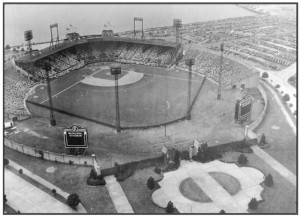 By the way, that historic game was played at Roosevelt Stadium in Jersey City against the Phillies. The Dodgers won 5-4 thanks to a walk-off sacrifice fly by pinch-hitter Rube Walker, off of reliever Duane Pillette, that sent Don Zimmer across the plate with the winning run.
By the way, that historic game was played at Roosevelt Stadium in Jersey City against the Phillies. The Dodgers won 5-4 thanks to a walk-off sacrifice fly by pinch-hitter Rube Walker, off of reliever Duane Pillette, that sent Don Zimmer across the plate with the winning run.
Murray Dickson took the loss for the Phillies. Clem Labine picked up the win in relief of Carl Erskine.
Granny Hamner notched a pair of hits – a single and a double – for the Phillies in the losing cause.
Roy Campanella had two hits for the Dodgers – a single and a run-scoring double – and Gil Hodges drove in three runs with a bases-loaded double in the bottom of the first.
The game was played in front of 12,214 fans on a raw, cold night.
Now, Hollis, here’s why the Dodgers were playing in Jersey City.
During the early 1950s, several teams started experiencing financial woes:
• When the Boston Braves saw attendance drop below 300,000 in 1953, the team moved into a brand new 36,000-seat stadium in Milwaukee. Please note – In those days, the benchmark for profitability was drawing 1,000,000 fans.
• The next year, 1954, the St. Louis Browns became the Baltimore Orioles for similar reasons.
• Ditto with the Philadelphia A’s in 1955 – moving to Kansas City in the hopes of finding profitability.
Walter O’Malley, who owned the Dodgers, was conflicted.
On the one hand, O’Malley wondered if the grass might be greener somewhere else. In Brooklyn, he was splitting the New York market with two other teams – the New York Giants and New York Yankees. Perhaps the Dodgers would be better off having an entire market to themselves.
On the other hand, the Dodgers regularly drew in excess of 1,000,000 fans to Ebbetts Field. But the ballpark – just like its surrounding Brooklyn neighborhood – was both congested and deteriorating. Plus, parking for the ballgames was a problem.
O’Malley wanted to stay in Brooklyn.
He foresaw a new ballpark as the perfect solution. He pictured a brand new stadium at the intersection of Atlantic and Flatbush avenues. That location was perfect. So O’Malley went to the city planners and presented plans for a new ballpark – which he would privately fund.
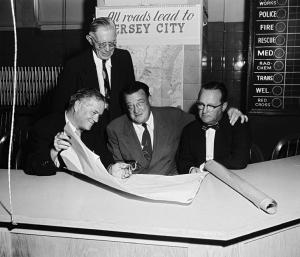 But O’Malley met resistance to his plan in the form of Robert Moses, who was the chairman of the Triborough Bridge and Tunnel Authority. In addition, Moses was chairman of the mayor’s Committee on Slum Clearance.
But O’Malley met resistance to his plan in the form of Robert Moses, who was the chairman of the Triborough Bridge and Tunnel Authority. In addition, Moses was chairman of the mayor’s Committee on Slum Clearance.
Moses shot down O’Malley’s proposal – plus several more modified proposals that O’Malley submitted.
So O’Malley decided to try to bluff Moses into submission. He was going to schedule seven games per season – one against each of the other seven National League teams – across the river in Jersey City to test the feasibility of moving the Dodgers to New Jersey.
So for two seasons – 1956 and 1957 – the Brooklyn Dodgers played seven games each season at Roosevelt Stadium in Jersey City.
At that point, when Robert Moses still refused to budge, O’Malley said the hell with it. He got together with Giants owner Horace Stoneham and choreographed the exodus of both the Dodgers and the Giants from New York to the welcoming arms of Los Angeles and San Francisco.
So, Hollis, there you have it. That’s why the Dodgers played a few games in Jersey City.
Barry Bowe is the author of Born to Be Wild, 1964 – The Year the Phillies Blew the Pennant, and 12 Best Eagles QBs.

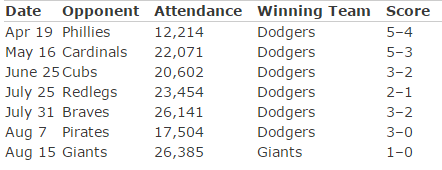
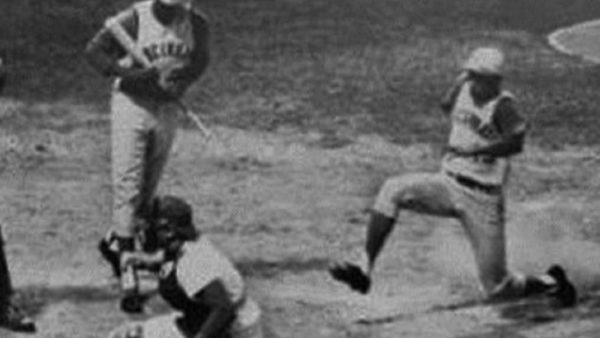




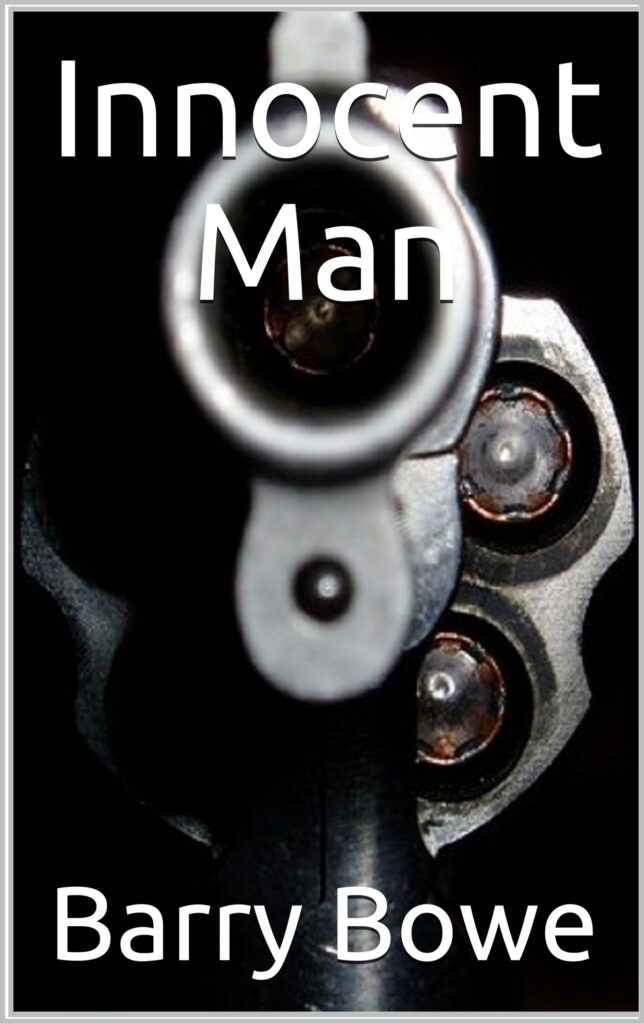

Comments
1 Comment